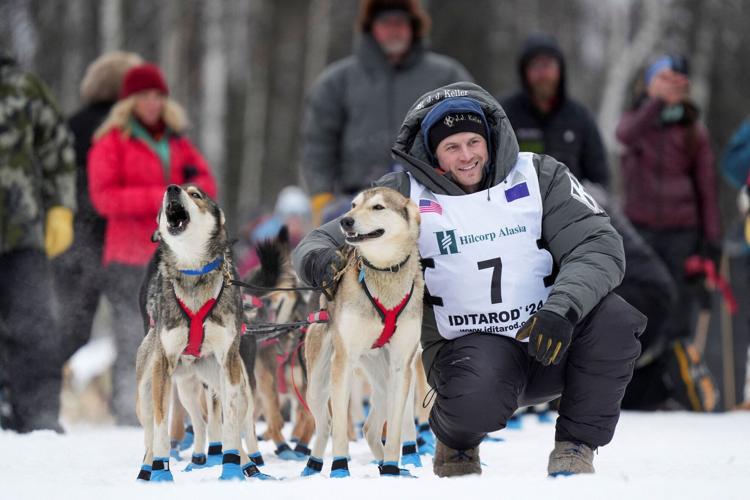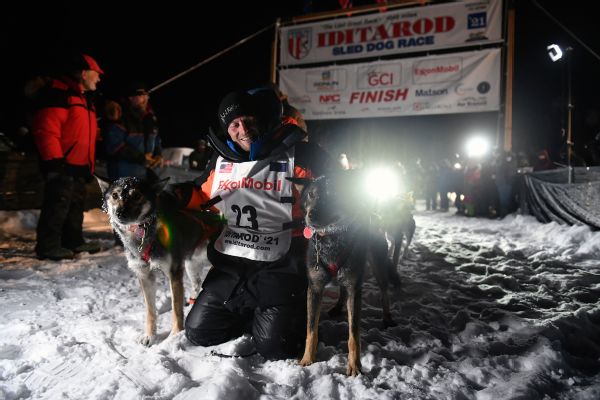Iditarod officials made a significant decision on Wednesday, issuing a two-hour time penalty to musher Dallas Seavey for not properly gutting a moose he encountered during the race earlier this week.
Race marshal Warren Palfrey assembled a three-person panel of race officials to delve into the circumstances surrounding the moose’s death.
The incident occurred early Monday, approximately 12 hours after the official start of the dayslong race, when the moose became entangled with Seavey and his dog team. One of Seavey’s dogs was injured during the encounter and had to be flown back to Anchorage for medical attention.
In accordance with race rules, if a musher kills a big game animal like a moose, caribou, or buffalo in defense of life or property during the race, they are required to gut the animal and report it to officials at the next checkpoint.

Seavey, a five-time Iditarod champion, encountered the moose shortly after departing from the Skwentna checkpoint. He used a handgun to shoot and kill it approximately 14 miles (22 kilometers) outside the village at 1:32 a.m. on Monday.
The panel’s investigation revealed that Seavey spent about 10 minutes at the kill site before mushing his team approximately 11 miles (18 kilometers) and then camping for a three-hour layover. The team departed for the next checkpoint at 5:55 a.m., arriving at Finger Lake at 8 a.m., where Seavey reported the kill.
Seavey explained to an Iditarod Insider television crew at the Finger Lake checkpoint that the moose had fallen onto his sled and was sprawled across the trail. He admitted to gutting the animal to the best of his ability but described the process as challenging.
In a statement, the Iditarod announced that it had concluded that the moose was not adequately gutted by Seavey. Gutting, as defined by officials, involves removing the intestines and other internal organs.
According to Iditarod regulations, time penalties can be imposed if a majority of the three-person panel agrees that a rule was violated and that a competitive advantage was gained. Penalties can range up to a maximum of eight hours per infraction.
The two-hour penalty imposed on Seavey will be added to his mandatory 24-hour layover.
Efforts were made to retrieve the moose, salvage its meat, and process it. Iditarod associates in Skwentna were responsible for distributing the salvaged food.
Despite the penalty, Seavey was leading the Iditarod on Wednesday, becoming the first musher to leave the checkpoint in the mining ghost town of Ophir, approximately 350 miles (563 kilometers) into the race, after a brief 15-minute stop.
Another musher, Jessie Holmes, had arrived in Ophir first, nearly two hours ahead of Seavey, but seemed to be resting. Additionally, four other mushers were also present in Ophir.
The ceremonial start of the race took place on Saturday in Anchorage, with the competitive start commencing on Sunday.
This year’s race features 38 mushers who will cover approximately 1,000 miles (1,609 kilometers) across two mountain ranges, the frozen Yukon River and the ice-covered Bering Sea. Roughly 10 days after the start, they will leave the ice and travel onto Main Street in the historic gold rush town of Nome for the final stretch to the finish line.







